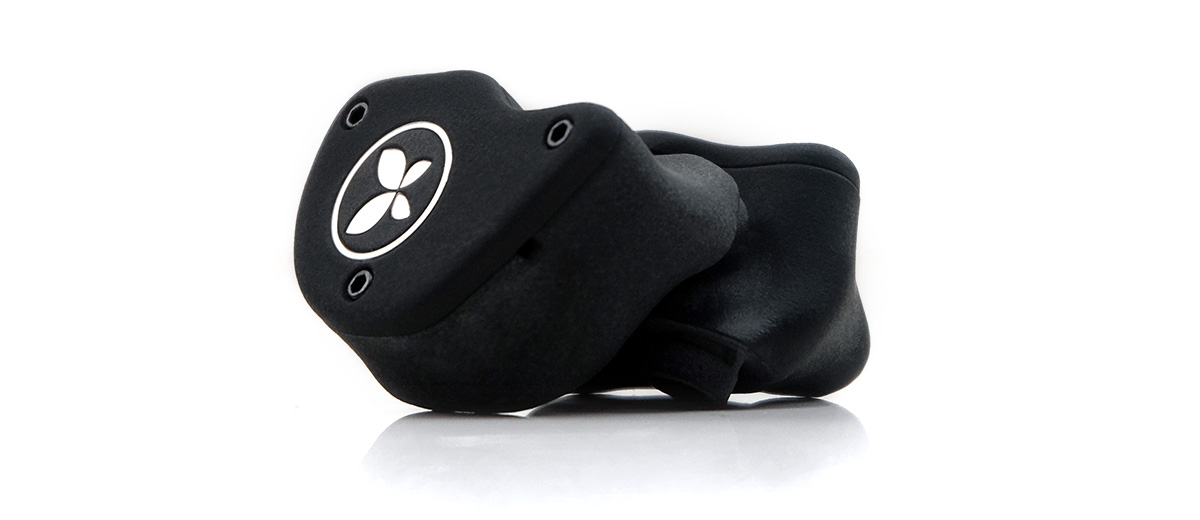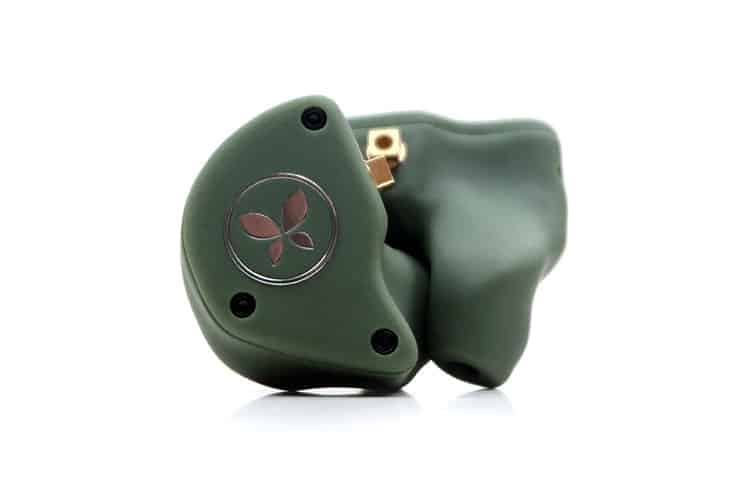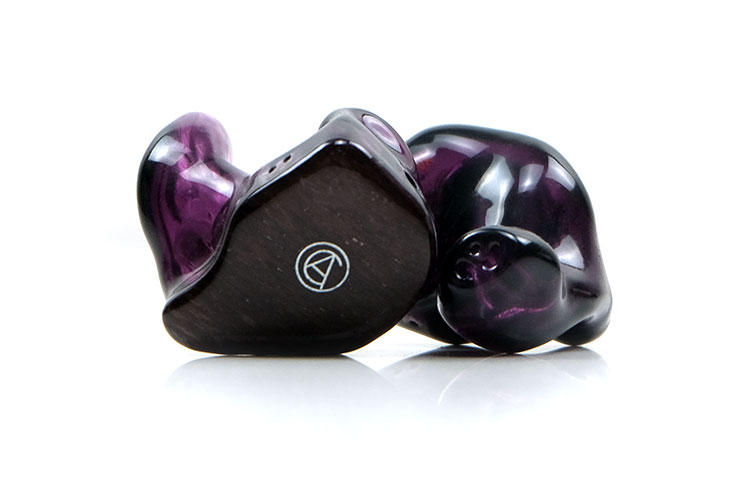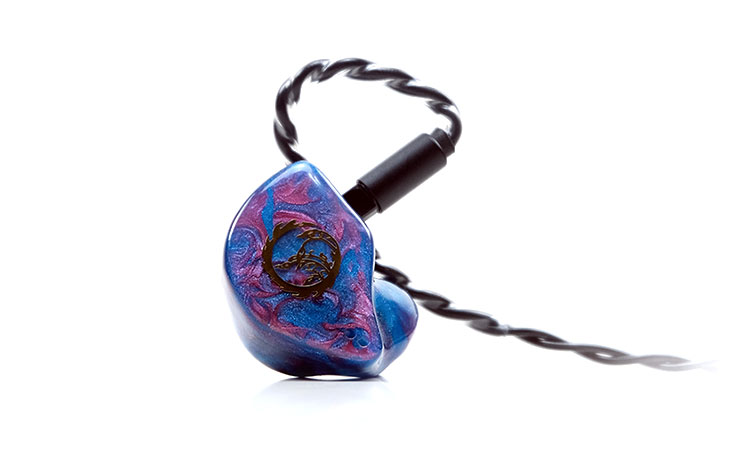Select Comparisons
The following Bellos Audio X4 comparisons were completed using a mixture of the FiiO M15s and the Cayin N7 as our main sources. All compared monitors are in their custom format and use their stock cables.
Bellos Audio X2
The Bellos Audio X2 was their first custom monitor product release under the brand name and one that we featured around the same time last year. You can read our full review of the X2 here.
Technical
The X2 is Bellos Audio’s entry-level custom IEM with a dual-balanced armature driver configuration, well below the hybrid triple BA and single dynamic driver configuration of the X4. It also uses a 2-way crossover as opposed to a 4-way inside the X4.
However, there are some features shared between the two IEMs. Both use Bellos Audio’s modular driver design which means both assemblies are fast to build and easy enough to repair should there be a driver issue.
Second, the two custom monitors also use internal fixed ATOM filtering technology which has trickled down from the FIR Audio R’n’D department with each offering a -17 dB passive isolating capability.
Where they diverge is in the universal bore system of the X2, born out of the use of a fully molded nozzle as opposed to the X4’s In Air Canals technology. A universal bore system is a tubeless design throughout the spout allowing the sound to mix freely on the way to the ear canal. It does wonders for the X2 soundstage capability.
The In Air Canals changes everything by using winged tips or Air Tips so it becomes almost a hybrid universal/custom with an emphasis on comfort and sealing properties for stage artists.
The X2 is rated at 41Ω impedance with an SPL of 114 dB/mW. That is a little higher and slightly less efficient on paper compared to the X4 which is measured at 16Ω and 116 dB/mW. On the Cayin N7, the X4 is marginally louder though in truth the additional bass presence might also make it seem a lot more dynamic than the X2.
Design
A huge difference here between the two designs but less so if you are buying the X2 now as opposed to last year when I did the review.
Last year you got a traditional mold which included the nozzle. This year, all X series models, including the X4 and X2, use the new In Air Canal system so they are going to look and feel the exact same. The only major differences will be your chosen color, cable, and socket termination of choice.
Before this big change, the two units still had a lot in common such as the matte grippy textured shells, the strong seam lines, triple screws, and the Bellos Audio logo. Both monitors are built to be taken apart really quickly for service and repair so the methodology is retained for one and all.
The similarity is also true for the cable. The entire line gets the same 48″ 26AWG SPC ‘Scorpion’ 8-wire cable sheathed in rubbery black PVC and braided nice and tight. The stock is 3.5mm but I do recommend you email and request an upgrade to balanced if you are using a good DAP.
The biggest advantage of moving to the In Air Canal system is that it does create a smaller custom shell and it is comfier than the X2 textured shell when inserted into the ear.
The biggest disadvantage is the X4’s hybrid nature. Combined with the apex and the dynamic driver venting, that means the X4 does not isolate as well as the X2 ‘pre-In Air Canal’ version.
Performance
The X4 is warmer and more powerful sounding compared to the X2 with better extension and weight, particularly from 50Hz up to 100Hz with that dynamic driver adding improved texture and more natural levels of decay.
The X2 is punchy but comparatively bass-light. It puts a lot more pinna gain emphasis making it more of a midrange specialist.
The X4 drops the midrange gain a bit to create a more relaxed smoother vocal tone. It’s not dipped in the mids, far from it. I would say it is just below the Harman Target curve and combined with the warmer timbre and less pervasive lower treble it’s also less feisty.
The X2 is much more intimate and aggressive in the midrange and lower treble relative to the rest of its range. Vocals are right there in front of your face so to speak.
And not just with vocals but backing instruments strike with a solid more vibrant tone but also drier sounding with more treble influence. You really hear the crack in a hand clap for instance with the X2 whereas the X4 drops the presence back a little and softens the leading edges.
If I step out of my ‘preference lane’ the staging ability of these two is not a slam dunk for the X4. If I play to my preferred sound signature it most certainly is with that much-improved bass weight and power from the dynamic driver.
However, there is something almost magical about the stereo width of the X2 through the mids and highs. Granted, it’s not as natural in its arrangement nor as holographic as the X4 but if you are after a purely vocal first experience and need clear image separation then the X2 still has a lot of value.
Custom Art FIBAE 5
The Custom Art FIBAE 5 was launched earlier in 2023 and represented the first high-end hybrid multi-driver IEM from the company. You can read our full review of the FIBAE 5 here.
Technical
The FIBAE 5 is actually a tribrid mix of dynamic, planar, and BA drivers. The precise configuration is a 10mm dynamic for the lows, dual BA for the mids, and a dual planar tweeter for the highs and super highs.
The X4 keeps it a bit simpler with a single 6mm dynamic for the lows/low-mids, 2 BA drivers for the mids/highs, and a single BA tweeter for the ultra-highs.
Both custom monitors use a 4-way crossover, however, the FIBAE 5 also throws in its FIBAE technology which is designed for flat impedance regardless of any source or amplifier rating output. That is something the Bellos Audio team is well aware of from their legacy in 64 Audio, (LID), but has yet to introduce in the new brand’s line-up.
Unlike the X4, the FIBAE 5 has no internal venting technology similar to ‘apex’ but what it does have is a tiny insert to the rear of the shell for the dynamic driver to vent. This also doubles up as a filter with CA supplying two tiny metal filters to decrease the bass output by 2.5 dB.
The FIBAE 5 is rated at 10Ω and 109dB @1kHz SPL which is a bit lower insensitivity than the X4 which is measured at 16Ω and 116 dB/mW. That pretty much plays out in real-life subjective testing. Using the Cayin N7’s balanced output in low gain, the FIBAE 5 did need a volume boost to volume match the X4.
Design
The FIBAE 5 is a 100% custom resin design meaning nothing like the In-Air Canal system used by the X4. You get the full resin nozzle that goes right down to the second bend in your ear canal.
That also gives the FIBAE 5 a slight edge in terms of isolation even though both are vented. Both do well on low-frequency background hum but it sounds to me like the denser resin of the FIBAE 5 nozzle can block out high-frequency background sound a bit better than the more porous materials of the Air Canal tips.
The FIBAE 5 is a smaller resin shell with a wider variety of design options but may not be as durable as the X4’s robust finish. However, the polished exterior of the FIBAE 5 is quite comfortable, perhaps more so than the X4.
I get why that is though. The X4 shell is quite textured which might create a bit of friction when inserting compared to the older X2 nozzle. Going with the Air Tips does even it up a bit but you can still pick up on the textured finish in your ear’s concha.
Texture also offers a better grip for your hands when taking them out, especially if there is sweat and moisture which would make the FIBAR 5 resin a slippery customer.
Both have well-designed 8-wire SPC cables though I would say the FIBAE 5 version is the thicker of the two and silver as opposed to black. Both handle quite well with low microphonics. Custom Art also provides you with the choice of an alternative 28AWG Litz 5 UPOCC Silver-plated copper wire Null Audio Ethos cable on checkout.
Performance
At a very high level, the FIBAE 5 has a ‘lighter’ timbre with a very articulate set of lows and highs. The X4 comes across as warmer, with more bloom on the lows and a richer denser tonal quality through the mids with less energy through the highs.
Drilling down the bass comparison feels very different in their respective presentation. Both have a good punch and neither is heavy-handed on the sub-bass but the X4 does have more mid-bass bloom so its decay is longer and its warmth levels are higher. It also feels subjectively positioned a bit closer to my ear.
The FIBAE 5 lows are tighter, perhaps more articulate, and cleaner with just as much extension but the acoustic effect feels like it’s got a bit more distance to travel to hit my ear. I feel I am observing the bass response of the FIBAE 5 whereas I am right in it with the X4.
No mistaking the different textural quality of the highs of the FIBAE 5 which are very solid, forward, and energetic to my ear. The X4 sounds relatively more relaxed and smoother sounding save with just a subtle treble influence for percussion bite.
The FIBAE 5 timbre through the mids is leaner, not as dense or as textured as the X4 midrange but definitely excelling in terms of pristine clarity. Vocals are fuller and more intimate on the X4 with the FIBAE 5 subjectively more neutral in their positioning.
I think both do well in conveying a nice sense of rhythm and timing with our paired DAPs but I classify the FIBAE 5 as a little brighter of the two, more ethereal in its delivery, with the X4 the darker denser sounding cousin.
Unique Melody MEXT Review
The Unique Melody MEXT was launched in mid-April 2022 and is also a hybrid multi-driver custom monitor. It is priced a little higher than the X4. You can read our full review of the MEXT here.
Technical
Both the X4 and the MEXT are hybrid monitors with a mix of dynamic and BA armature active drivers. However, there are quite a few differences.
The first big difference though is the MEXT’s use of an OBC or “Original Bone Conduction” ‘driver’ which provides an additional layer of tactile vibration, which we presume covers a similar frequency range to the MEST MKII.
The second is the configuration with the MEXT using a larger count of a single 10mm dynamic driver for the lows and four balanced armature drivers with 2 for the mids and 2 for the highs using a 4-way crossover.
The X4 comes with a smaller 6mm dynamic driver for the lows with three balanced armature drivers for the mids and highs but also uses a 4-way crossover. Though both are vented designs for the dynamic driver, the MEXT has no additional specific filter system like the X4’s apex filtering system.
The MEXT is rated at 16Ω impedance and 108dB @1kHz 1Vrms for SPL which, on paper, is not too far off X4 which has the exact same 16Ω rating. However, in our subjective testing using the FiiO M15s balanced 4.4mm output in low gain, the X4 did seem much the lively and louder of the two when volume matched.
Design
I mean, in terms of aesthetics, there is no doubt that the MEXT design is a killer design. The pitch of the X4 is more about the texture of the shell design rather than the visual pop, though I do find the X2 green version attractive.
The grippy textured shells do make handling a lot more sure-footed than the resin of the MEXT, especially with sweaty hands. Both are accurate custom designs going in different directions so to speak. Neither gave me any fitting issues whatsoever.
The X4 is smaller than the MEXT, at least in terms of depth with the In Air Canal system taking a lot of that nozzle length off. The MEXT is a traditional custom design so you have a longer nozzle designed to get as close as possible to the ear canal second bend.
And because of the depth of the nozzle and the denser resin material the MEXT will isolate better than the X4 but only in a relaxed or closed jaw position. With my jaw fully open the seal is broken, which does not happen with the X4’s In Air Canal Air Tips system.
The competing cables have a similar black aesthetic with the MEXT using a UM Copper M1 which is a 26AWG gauge OFHC copper 4-wire partnership with PW Audio.
Its PVC is a bit firmer than the X4 design and finished with slightly looser braiding. I have to give proper to the X4 ‘Scorpion’ wire for being that bit easier to manage though I do prefer the snazzier barrel designs on the UM Copper 1 cable which offer better contouring for gripping purposes.
Performance
I would give the nod to the MEXT for sub-bass presence and upper-mids refinement and then swing to the X4 for the punchier fuller-sounding mid-bass and more open-sounding midrange.
If you want the most powerful it has to be the MEXT but only if you resonate strongly with higher levels of sub-bass over mid-bass.
The X4 rolls off a little in comparison around 20-50Hz but has more gain from 100Hz to around the start of the lower mids or 400-500Hx which brings out more bloom and body, an area that the MEXT is a bit flatter in.
I do not find either monitor’s midrange to be overdone but they do sound different in tonal emphasis and imaging.
Chest voice rock vocals on the X4 sit a bit lower in the mix than the MEXT, around 800-1K. Not that the MEXT is hugely pushed in this region but rather it’s more neutral in imaging whereas the X4 drops a little more in deference to the mid-bass punch and bloom.
The X4 isn’t quite as forward as the MEXT for female vocals but it does offer an airier more open midrange whereas the MEXT seems to have less energy in the 2-4k range. This leaves you with an impression of less space around the vocals.
The X4 also seems a have a bit more subtle energy in the ultra-highs whereas the MEXT is more attenuated in the upper treble.
Our Verdict
The Bellos Audio X4 continues the unique proposition started by the X2 with a tank-like build quality but goes in the opposite direction of its smaller sibling in terms of tuning by ramping up the warmth and power substantially.
It’s smooth sounding and yet enjoyably rhythmic at the same time making it a very nice matchup for modern pop and soul vocal performances. Nothing is overly fatiguing in its delivery.
The new In-Air Canal system with the stubby nozzle combined with winged silicone tips will be a topic for debate.
It is indeed very comfortable for my ears compared to the full nozzle on my older X2 sample, I cannot fault the claim there. However, it did not isolate quite as well as a full mold which might be important for some users.
Otherwise, the X4’s durable robust design and solid tuning will go a long way to satisfying those X2 owners craving for more “bounce for the ounce” from their monitors.
Bellos Audio X4 Technical Specifications
- 3 Balanced Armature drivers
- 1 Dynamic Driver
- Frequency Response: 20Hz – 20kHz
- Impedance: 16Ω at 1kHz
- Sensitivity: 116 dB/mW
- Crossover: Integrated 4-Way Crossover
- Isolation: -17dB (internal ATOM)






